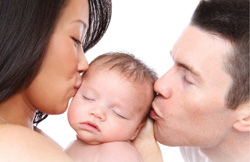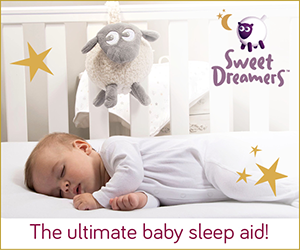Introduction to Baby Cues

One of the biggest challenges for parents as they embark on their parenting journey is to gain an understanding of their child’s unspoken language. Before a baby is able to communicate through verbal language that we, as parents can easily understand, nature equips them with ability to communicate their needs and desires through their body language. Once you understand this new language, it can be much easier to respond to your child’s needs and therefore improve your parenting skills.
This physical form of communication (body language ) can be divided into three main categories:
Cues of Engagement
Cues of Disengagement
Cues of Over stimulation
CUES OF ENGAGEMENT
These cues suggest that a baby is neurologically, physically and emotionally content with their environment at that point in time.
Bright clear eyes
Head in neutral position
Rhythmical, “cooing” type sounds that are pleasing to the ear
Synchronized, bold arm and leg movements that catch your attention – For Example – When you greet your baby for the first time in the morning, they wave their arms and legs in a synchronized and welcoming manner. It is as if they are trying to say “good morning” with the use of their extremities. Graphic?
Locked gaze
Smiling
Stilling or stopped movement
CUES OF DISENGAGEMENT
These cues suggest that the baby is unhappy neurologically, physically or emotionally with their current environment for a myriad of reasons.
Turning head with intention to one side or the other, as if to suggest that they have had enough of you or the situation.
Eyes become glazed
Gaze is broken
“Staccato” or fragmented sounds that are not pleasing to the ear
General fussiness
Strong back arching
Wrinkled forehead
If left unchecked, the above cues may lead to the ultimate disengagement cue of crying. Once you recognize these signs in your baby, it is important to respond to their needs or perhaps provide them with some developmental support techniques in attempt to prevent over stimulation.
CUES OF OVER STIMULATION
Deliberate and extreme arching of the back.
Note: This can also be a sign of gas.
Hiccups – Hiccups are a reflex and often occur for benign reasons. However, if they occur in conjunction with a cluster of other disengagement cues or at the same time when there is an increase in stimulation, it can be a warning sign that the baby is starting to become over stimulated.
In order to successfully implement this program into your family, the following considerations must be addressed.
Timing for Implementation of Program
Before beginning this baby massage program, it is best to get permission from you baby’s doctor or paediatrician. As long as your baby is healthy or medically stable, the sooner you start the program the better. On the contrary, it is also never too late to start the program to begin enjoying the diverse benefits that it has to offer. The only difficulty that you may experience with introducing this program with an older child is that it is more challenging for the parents to learn a new skill with a child who is now mobile.
Best Time of Day to Give Massage
The best time to massage your baby is when they are in a quiet, alert state. That time may vary from day to day for your child. The one predictable thing about parenting is that it is unpredictable, therefore it is important to listen to the cues that your child is giving you and respect what they are trying to tell you. By doing this, your child will learn to trust you and the bond with your child will strengthen deeper.
Adjusting to Cues that Your Baby Gives While Being Treated
It is crucial to the success of the infant massage program that you adjust your touch in response to the cues that you are receiving from your baby. Varying your pressure, speed or simply altering the duration of the massage will help to customize the treatment in order to best suit your child’s needs.
What to use to massage your Baby
In order to be safe when massaging your baby, be sure to read your labels carefully! It is important to use a cold pressed, NON NUT based oil that is mineral oil free! One great option is the new WoW Baby Massage Oil that has been voted best baby massage oil by “Ecoparent” magazine.
Wallis for Wellness was thrilled to partner with Bare Organics, a Canadian company to create of a new Baby Massage Oil that contains pure and edible oils that are safe and effective when used for baby massage. Made with 100% safe, edible oils including: avocado oil, organic sunflower oil, organic flaxseed oil, wheatgerm oil and lightly scented with organic lavender essential oil; It’s “nut-free” as recommended by Canadian Paediatric Society and suited for use at home or with your massage therapist.
Now that you understand your baby’s body language, when to massage your baby and what products to use in order to be safe, let’s communicate your love through touch and get started with the WoW, parent empowering, baby massage program! Enjoy!
Margaret Wallis-Duffy is a founder of Wallis For Wellness, a Registered Massage Therapist, Internationally Certified Infant Massage Instructor, speaker and a media personality.




